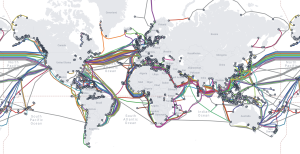GEO Satellites: Introduction to Geostationary Orbit Satellites
GEO satellites, or geostationary orbit satellites, are a type of satellite that orbits the Earth at an altitude of approximately 36,000 kilometers, which is about 1/10 of the way to the Moon. At this altitude, the satellite’s orbital period matches the Earth’s rotational period, allowing it to remain stationary in the sky relative to a fixed point on the Earth’s surface. This unique characteristic makes GEO satellites ideal for a wide range of applications, including telecommunications, earth observation, and weather forecasting.
GEO satellites have been in use for several decades, with the first GEO satellite, Syncom 2, launched in 1963. Since then, hundreds of GEO satellites have been launched, providing a vast array of services and applications. The focus keyword GEO satellites is essential in understanding the technology and applications of these satellites, which are a crucial part of modern telecommunications and earth observation systems.
Technology and Applications of GEO Satellites
GEO satellites use a range of technologies to provide their services, including transponders, antennas, and solar panels. Transponders are used to receive and retransmit signals, while antennas are used to transmit and receive data. Solar panels provide the power needed to operate the satellite’s systems. GEO satellites also use a range of propulsion systems, including ion engines and Hall effect thrusters, to maintain their position and altitude.
The applications of GEO satellites are diverse and widespread. In telecommunications, GEO satellites are used to provide television broadcasting, internet connectivity, and mobile phone services. They are also used for earth observation, providing images and data on weather patterns, ocean currents, and land use. Additionally, GEO satellites are used for navigation, providing location information and timing signals for GPS and other navigation systems.
Future Developments and Challenges of GEO Satellites
Despite the many benefits and applications of GEO satellites, there are also challenges and limitations to their use. One of the main challenges is the risk of collisions with other satellites or space debris, which can cause significant damage and disruption to services. Additionally, the increasing number of satellites in GEO orbit is leading to concerns about congestion and interference, which can impact the quality and reliability of services.
To address these challenges, researchers and engineers are developing new technologies and techniques, such as advanced propulsion systems and more efficient transponders. There are also efforts to develop new types of satellites, such as mega-constellations, which can provide more capacity and flexibility than traditional GEO satellites. Furthermore, there is a growing focus on sustainability and environmental issues, with efforts to reduce the environmental impact of satellite launches and operations.
Conclusion and Future Outlook
In conclusion, GEO satellites are a vital part of modern telecommunications and earth observation systems, providing a wide range of benefits and applications. While there are challenges and limitations to their use, researchers and engineers are developing new technologies and techniques to address these issues. As the demand for satellite services continues to grow, it is likely that GEO satellites will play an increasingly important role in the future of telecommunications and earth observation.


